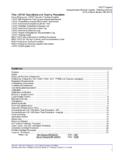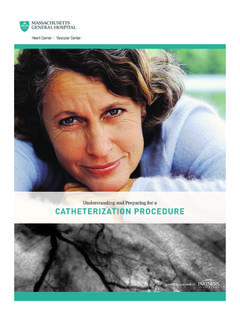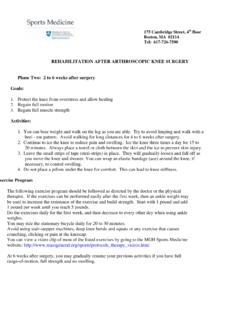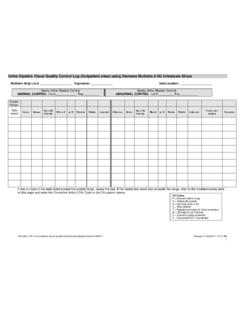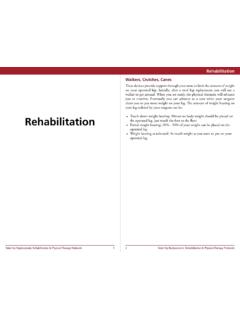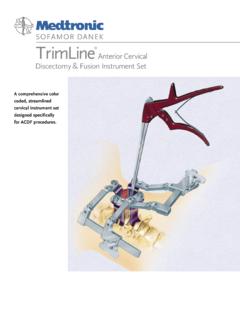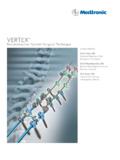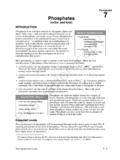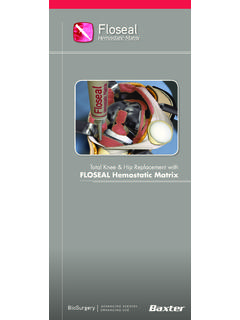Transcription of Rotator cuff patient info - massgeneral.org
1 175 Cambridge Street, 4th floor Boston, MA 02114 617-726-7500 SHOULDER - TORN Rotator CUFF ANATOMY AND FUNCTION The shoulder joint is a ball and socket joint that connects the bone of the upper arm (humerus) with the shoulder blade (scapula). The capsule is a broad ligament that surrounds and stabilizes the joint.
2 The shoulder joint is moved and also stabilized by the Rotator cuff. The Rotator cuff is comprised of four muscles and their tendons that attach from the scapula to the humerus. The Rotator cuff tendons (supraspinatus, infraspinatus, teres minor and subscapularis) are just outside the shoulder joint and its capsule. The muscles of the Rotator cuff help stabilize the shoulder and enable you to lift your arm, reach overhead, and take part in activities such as throwing, swimming and tennis. Rotator CUFF INJURY AND TREATMENT OPTIONS The Rotator cuff can tear as an acute injury such as when lifting a heavy weight or falling on the shoulder or elbow.
3 The shoulder is immediately weak and there is pain when trying to lift the arm. A torn Rotator cuff due to an injury is usually best treated by immediate surgical repair. The Rotator cuff can also wear out as a result of degenerative changes. This type of Rotator cuff tear can usually be repaired but sometimes the tear may not need to be repaired and sometimes cannot be repaired. However, if the tear is causing significant pain and disability, surgery may be the best treatment to relieve pain and improve shoulder function. If a torn Rotator cuff is not repaired, the shoulder often develops degenerative changes and arthritis many years later.
4 This type of arthritis is very difficult to treat and the longstanding tear in the Rotator cuff may be irreparable. DIAGNOSIS OF TORN Rotator CUFF Symptoms of shoulder pain that awaken you at night, and weakness raising the arm are suggestive of a torn Rotator cuff. Examination of the shoulder usually reveals weakness. The diagnosis can be confirmed by magnetic resonance imaging (MRI) or an x-ray taken after dye has been injected into the shoulder (arthrogram). A more sensitive test such as arthrogram MRI or arthroscopy may be needed to diagnose a small tear or a partial tear of the Rotator cuff.
5 175 Cambridge Street, 4th floor Boston, MA 02114 617-726-7500 SHOULDER SURGERY TO REPAIR TORN Rotator CUFF PREOPERATIVE INSTRUCTIONS Schedule surgery with the secretary in the doctor s office. Within one month before surgery * Make an appointment for a preoperative office visit regarding surgery * A history and physical examination will be done * Receive instructions * Complete blood count (CBC) * Electrocardiogram (EKG) if over the age of 40 Within several days before surgery * Wash the shoulder and area well * Be careful of the skin to avoid sunburn, poison ivy, etc.
6 The day before surgery * Check with the doctor s office for your time to report to the Surgical Day Care Unit the next day (617-726-7500) * NOTHING TO EAT OR DRINK AFTER MIDNIGHT. If surgery will be done in the afternoon, you can have clear liquids only up to six hours before surgery but no milk or food. The day of surgery nothing to eat or drink For surgery at MGH main campus in Boston: Report directly to the Surgical Day Care Unit on the third floor of the Wang Ambulatory Care Building at Massachusetts General Hospital two hours prior to surgery.
7 For surgery at the surgery center at MGH West in Waltham: Report directly to the Ambulatory Surgery Center on the second floor of Mass General West. 175 Cambridge Street, 4th floor Boston, MA 02114 617-726-7500 SHOULDER - Rotator CUFF REPAIR POSTOPERATIVE INSTRUCTIONS Phase One: the first week after surgery GOALS: 1. Control pain and swelling 2. Protect the Rotator cuff repair 3. Protect wound healing 4. Begin early shoulder motion ACTIVITIES: Immediately After Surgery 1.
8 After surgery you will be taken to the recovery room room, where your family can meet you. You will have a sling on your operated arm. Rarely, an abduction pillow is needed to hold the arm up in the air away from the body. 2. You should get out of bed and move around as much as you can. 3. When lying in bed , elevate the head of your bed and put a small pillow under your arm to hold it away from your body. 4. Apply cold packs to the operated shoulder to reduce pain and swelling. 5. Move your fingers, hand and elbow to increase circulation. 6. The novocaine in your shoulder wears off in about 6 hours.
9 Ask for pain medication as needed. 7. You will receive a prescription for pain medication for when you go home (it will make you constipated if you take it for a long time). The Next Day After Surgery 1. The large dressing can be removed and a small bandage applied. 2. Remove the sling several times a day to gently move the arm in a pendulum motion: lean forward and passively swing the arm. 3. You can be discharged home from the hospital or surgery center as long as there is no problem. 175 Cambridge Street, 4th floor Boston, MA 02114 617-726-7500 At Home 1.
10 You can remove the bandages but leave the small pieces of tape (steristrips) in place. 2. You may shower and get the incision wet. To wash under the operated arm, bend over at the waist and let the arm passively come away from the body. It is safe to wash under the arm in this position. This is the same position as the pendulum exercise. 3. Apply cold to the shoulder for 20 minutes at a time as needed to reduce pain and swelling. 4. Remove the sling several times a day: move the elbow wrist and hand. Lean over and do pendulum exercises for 3 to 5 minutes every 1 to 2 hours.

